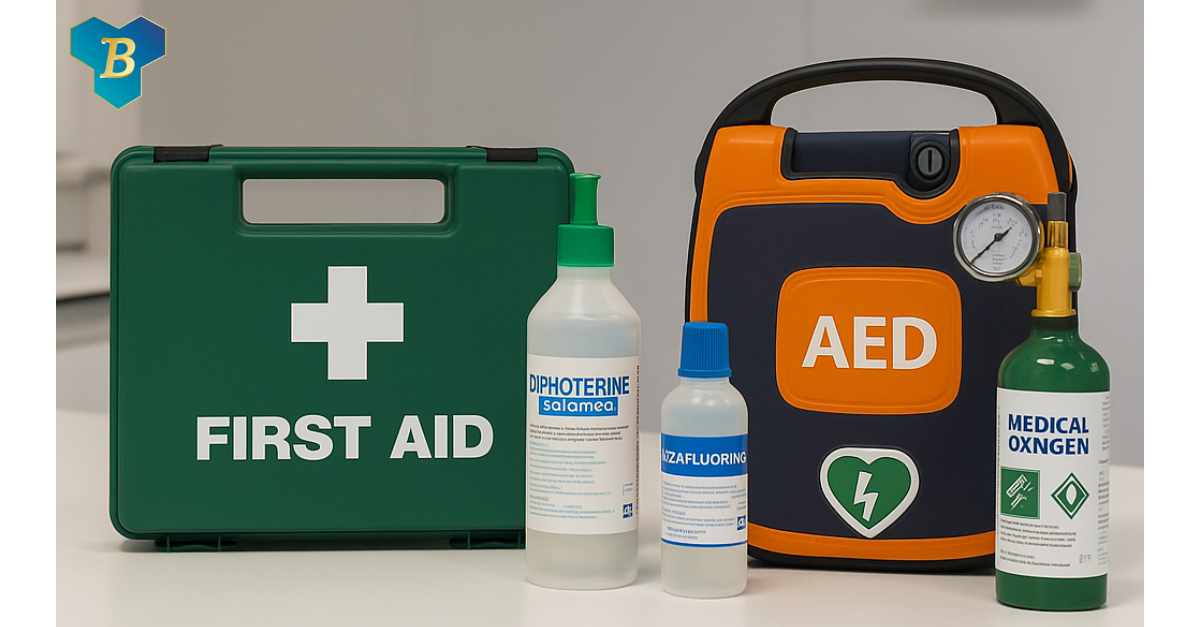For over 40 years, Butterworth Laboratories has provided independent, contract analytical services to the global pharmaceutical and related industries.
Why First Aid Preparedness Matters
25 April 2025
At our analytical laboratory, we operate with robust safety protocols, risk assessments, and engineering controls to protect our staff and visitors from harm. However, even the most reliable control measures are not infallible. That’s why being prepared for first aid emergencies is not just a legal obligation it’s a critical component of a resilient safety culture.
When Things Go Wrong: The Case for First Aid Readiness
Despite containment systems, PPE, and safe handling procedures, incidents can happen. Spills, splashes, or accidental inhalation of hazardous chemicals can occur in moments of distraction or equipment failure. In these rare but high-impact scenarios, the speed and effectiveness of first aid response can make all the difference not just in terms of outcomes, but also in demonstrating care and diligence to our staff and visitors.
What We Keep on Hand — And Why
To be ready for the worst, we’ve equipped our Laboratory with more than just standard first aid kits. Here’s a closer look at our first response arsenal:
- Standard First Aid Kits
- Our kits are regularly checked, fully stocked, and strategically placed throughout the premises for rapid access. They cover cuts, burns, and minor injuries—the most common types of workplace incidents.
- Diphoterine Solution
- Diphoterine is an essential decontamination solution for chemical splashes on the skin or eyes. It helps to neutralise a wide variety of aggressive chemicals, potentially preventing severe burns or tissue damage when used promptly after exposure.
- Hexafluorine
- Specifically designed for Hydrofluoric Acid exposure, which is a particularly dangerous substance due to its deep tissue penetration and systemic toxicity. Hexafluorine provides targeted emergency rinsing to bind fluoride ions quickly, minimizing damage.
- AED (Automated External Defibrillator)
- While not specific to chemical risks, a readily available AED is vital for cardiac emergencies, or in rare cases of anaphylaxis, electric shock, or chemical-induced cardiac events.
- Medical Oxygen
- For respiratory distress, oxygen can be a lifesaving bridge while waiting for emergency services, whether due to inhalation of fumes or other health complications on-site.
- Naloxone (Narcan)
- Though not common in all laboratory environments, we carry Narcan (nasal spray) as a safety measure due to the potential for opioid exposure (e.g., fentanyl analysis). It’s a small addition with a significant impact in rare but critical situations.
It’s Not Just What You Have — It’s What You Know
Emergency kits are only as effective as the people who use them. That’s why we provide:
- Regular first aid training for staff, including chemical-specific response.
- Clear signage and locations throughout the building.
We aim to create a workplace where first aid is a proactive mindset.
Conclusion
In analytical laboratories, it’s tempting to assume that strict controls are enough. But preparedness isn’t about pessimism, it’s about realism. Accidents are rare, but response time and readiness are everything when they do happen. By investing in specialist first aid equipment and training, we’re not just ticking boxes, we’re looking out for each other.